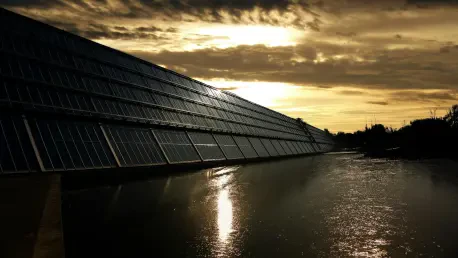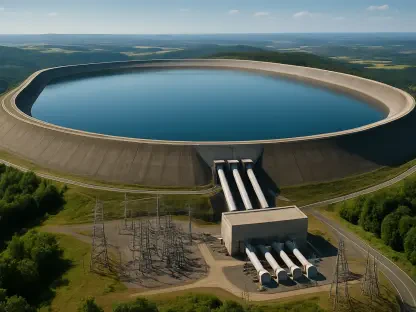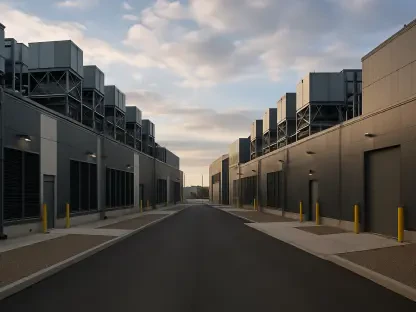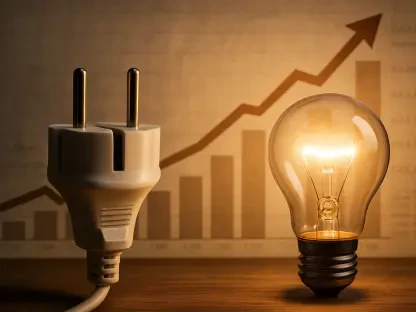The increasing shift towards clean energy solutions has prompted the exploration of innovative technologies that harmonize environmental preservation with energy production. Among these, floating solar panels, scientifically referred to as floating photovoltaics or floatovoltaics, emerge as a promising solution. These panels are designed to float on water bodies, such as reservoirs and lakes, utilizing spaces that do not require land clearing and thereby preserving terrestrial habitats. This technology offers a dual advantage: it mitigates the ecological footprint of solar energy conversion and enhances panel efficiency through cooling provided by water. Recent studies estimate that deploying floating photovoltaics on a fraction of the global reservoirs could potentially yield almost a third of the United States’ annual electricity consumption, highlighting their substantial impact on energy sustainability.
Technological Design and Efficiency
Advantages of Water-Based Installation
Floating solar panels are strategically installed on artificial water bodies, including reservoirs and wastewater-treatment ponds, which do not demand land modification or clearing. These panels are mounted on rafts, secured to the base or shoreline, and designed to handle seasonal water level fluctuations, ensuring consistent stability and efficiency. One notable benefit is the enhanced efficiency derived from water cooling, as lower temperatures improve the overall performance and longevity of solar cells. In reservoirs equipped with hydroelectric dams, floating photovoltaics can complement energy production by offsetting reduced water flow during dry periods. This solar-hydro hybrid model stabilizes power output throughout the year by capitalizing on the sunlight available even during low water flow seasons.
Engineering and Adaptability
Engineers play a crucial role in designing systems that adapt to shifts in water levels. The adaptability of these systems ensures that the integrity and functionality of panels remain unaffected by environmental changes. This adaptability is crucial, particularly in regions prone to seasonal variations that could otherwise compromise solar energy production. Engineers focus on developing more robust structures capable of resisting adverse weather conditions, while also considering site-specific factors such as wind patterns and local biodiversity. Through continuous innovation and development, the adaptability of floating solar systems is increasingly refined, making them suitable for diverse aquatic environments worldwide.
Impact on Aquatic Ecosystems
Ecological Implications and Concerns
As floating photovoltaic technology becomes more prevalent, its implications for aquatic ecosystems are under rigorous study. A major concern revolves around shading effects, which may alter habitats beneath and surrounding the panels. Shading obstructs sunlight penetration, potentially reducing algae growth—a vital food source for various aquatic species. However, this shading could simultaneously prevent harmful algae blooms, improving overall water quality. The physical presence of platforms may impede bird activities, yet paradoxically offer safe havens away from predators. These complex dynamics underscore the necessity for detailed ecological assessments tailored to evaluate local biodiversity impacts before expansive deployment.
Navigating Ecological Complexities
Researchers emphasize the complexity inherent to ecological interactions with floating solar systems, pointing out that every water body exhibits unique attributes like climate and species diversity. The extent of solar panel coverage dramatically influences ecological outcomes; covering large surface areas may significantly impact photosynthesis rates, thereby affecting the aquatic food web. Scientists, including Simone Jaqueline Cardoso of Indiana University, advocate for meticulous longitudinal studies on these impacts, examining long-term shifts in species populations and water quality. Understanding these dynamics can facilitate informed decision-making in positioning panels to maximize both energy output and ecological preservation.
Collaborative Approaches in Design
Balancing Energy and Ecology
Optimizing the coexistence of energy production and ecological conservation necessitates collaborative efforts between scientists and manufacturers during design phases. Tailoring designs to minimize disruptions to local wildlife and ecosystems, such as scheduling construction outside breeding seasons or designing spacing that maintains natural light levels, becomes increasingly pivotal. Experts urge for strategic compromise strategies, ensuring renewable energy aspirations do not overshadow ecological health. Well-rounded design approaches ultimately lay the foundation for integrating floating solar systems into existing aquatic environments without compromising biodiversity.
Continuous Research and Development
Engineers are essential in crafting systems that can adapt to fluctuating water levels, ensuring panels maintain their integrity and functionality despite environmental changes. Such adaptability is vital for regions facing seasonal shifts that could threaten solar energy production. Engineers are committed to developing stronger structures that withstand adverse weather conditions, factoring in site-specific elements like wind patterns and local ecosystems. Through ongoing innovation, the adaptability of floating solar technology is continuously honed, making them increasingly viable for various aquatic environments around the world. These advancements not only focus on individual system durability but also emphasize environmental integration, taking into account the ecological harmony of surrounding areas. By refining these technologies, engineers aim to expand the application of solar energy in diverse geographical settings, promoting sustainable energy solutions worldwide, making solar more reliable no matter the locale.









